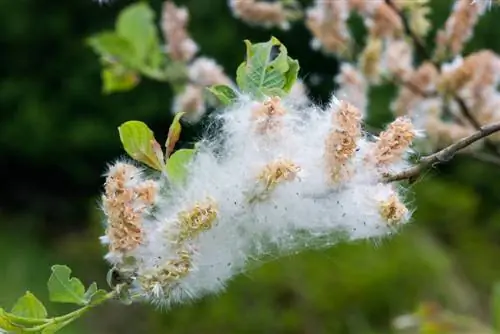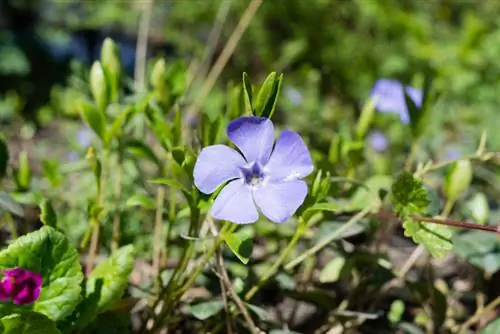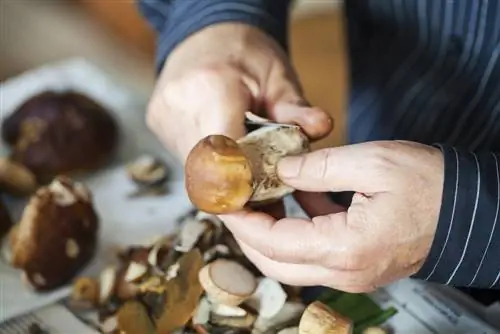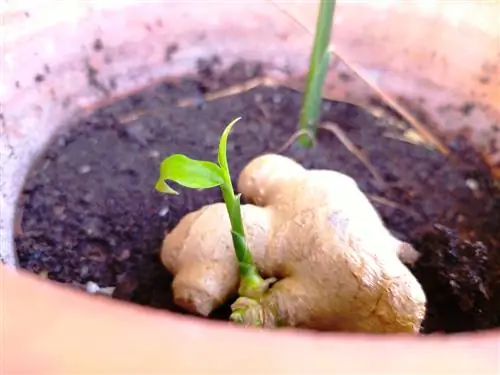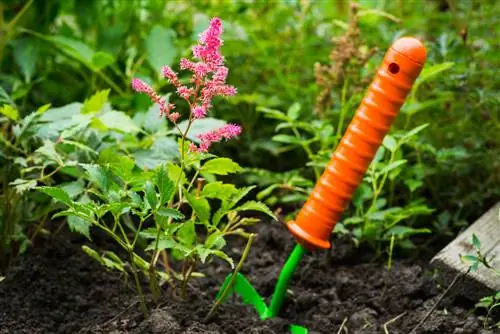- Author admin [email protected].
- Public 2023-12-16 16:46.
- Last modified 2025-01-23 11:21.
The fact that such a huge and fast-growing deciduous tree like the willow grows from a tiny seed is a true miracle of nature. Little is known about the small seeds, which is why many people don't realize what a masterpiece they can achieve given their small size. Among other things, they make the willow a pioneer tree. Read more interesting facts about the germination and propagation of a willow here.

How does willow reproduce by seeds?
Willow seeds are the smallest native woody seeds that mature after 4-6 weeks. Reproduction occurs through insect or wind pollination. However, growing from cuttings is faster and more successful than propagation from seeds.
Characteristics of willow seeds
- the smallest native woody seeds
- 1-1, 5 mm long
- 0, 2 mm wide
- hairy
Evolution and development
Seed development occurs comparatively quickly in pasture. In many willow species, the catkins bloom in early spring. The resulting fruits ripen after just four to six weeks and release the seeds.
Propagation of the willow
Since willows are predominantly unisexual and therefore cannot fertilize themselves, they rely on insects. Many people use an intense scent that primarily attracts bees. In areas with very low insect populations due to the icy climate, wind serves as the most important pollination aid.
Spread through the wind
Willow seeds often travel long distances due to their appearance. They belong to the umbrella or hair flyers. However, extensive seed production is necessary because the chances of germination actually occurring are very low. On the one hand, this is due to the tiny size of the willow seed. The small volume has hardly any capacity to transport supplies for germination. Willows also prefer swampy locations with moist substrates. When near water, the seeds risk not landing on solid ground.
Seeds are only partially necessary for growing
Propagation by seeds is the natural way a pasture spreads. Nevertheless, cultivation through cuttings is much quicker and more successful. Many tree nurseries also take advantage of this. Even nature seems to have recognized this. Storms repeatedly tear off willow branches. If these fall to the ground in a favorable location, new shoots will quickly emerge.

